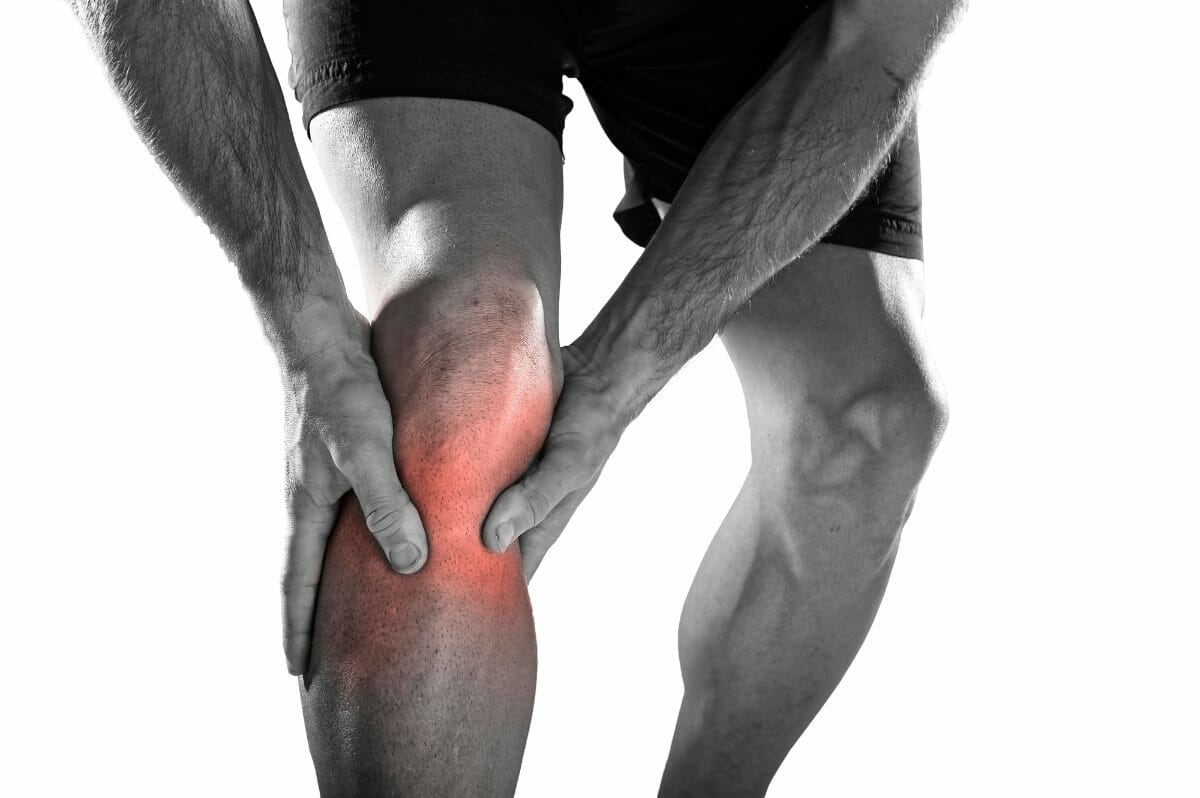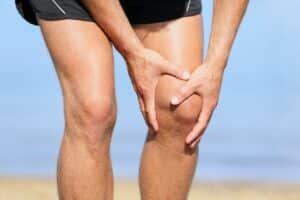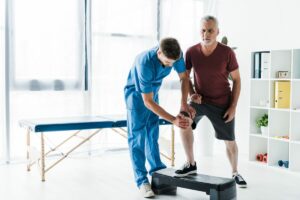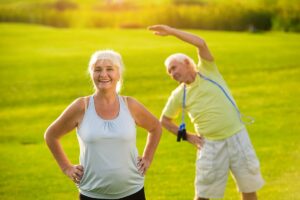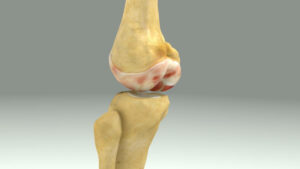Free download: Top 10 Natural & Easy Remedies for Joint Pain from Home. Learn these helpful remedies.
Estimated Reading Time: 12 minutes read
While quadriceps tendon tears are not the most common, when they do occur, they can have devastating effects.
It’s helpful to know a bit about quadriceps tendon injuries. In the off chance you do encounter a quadriceps tendon tear, you’ll be able to recognize it and know what to do.
Table of Contents
The Basics
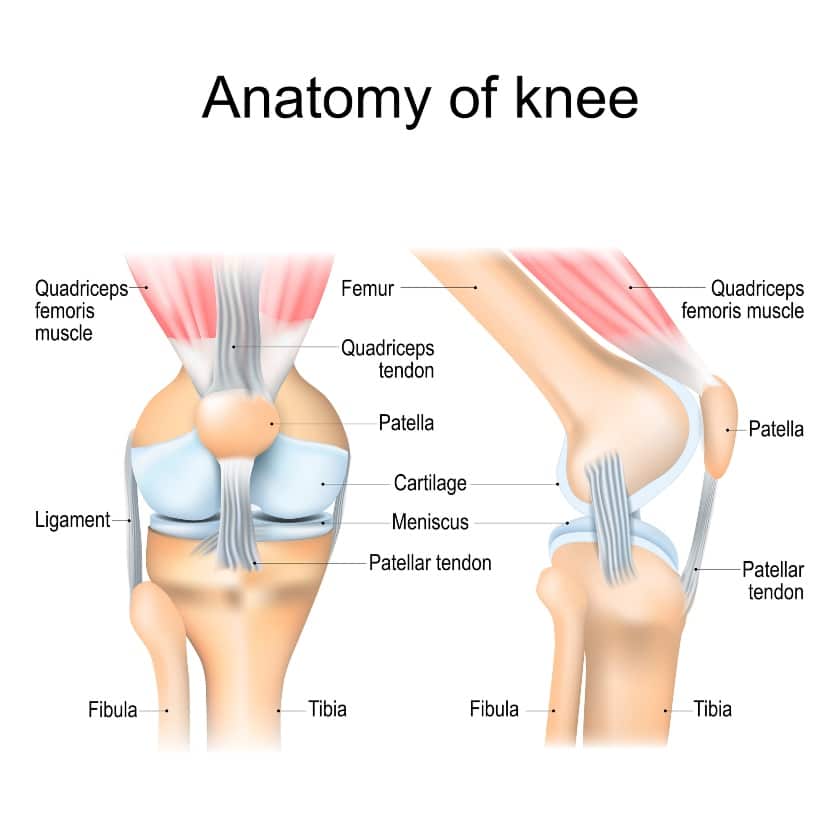
What are the quadriceps?
The quadriceps are a group of 4 muscles located on the front of the thigh just above the knee cap:
- Rectus femoris
- Vastus medialis
- Vastus lateralis
- Vastus intermedius
The quadriceps tendon attaches the quadriceps muscles to the patella, or knee cap. The patella then connects to the tibia, or shin bone, via the patellar tendon.
The combination of the quadriceps muscles, quadriceps tendon, and the patellar tendon work together to create the knee extensor mechanism, which allows the knee to straighten.
Knee extension is the primary action of the quadriceps muscles at the knee. Without this ability, it makes it very difficulty to do many of our daily tasks, including walking.
Causes of a Quadriceps Tendon Tear
We’ve already mentioned that this type of injury in the quadriceps tendon is not very common. So, how does it occur?
The most common causes and risk factors of a quadriceps tendon tear includes the following:
- Tendon weakness:
- Untreated quadriceps tendonitis
- Long-term use of steroids
- Low activity level
- Chronic disease
- Chronic renal failure
- Rheumatoid arthritis
- Systemic lupus erythematosus
- Metabolic disease
- Sports injury
- Those that involve repetitive jumping or twisting
- Those that involve repetitive jumping or twisting
- Direct laceration or cut to the quadriceps muscles
- Falls
Athletes are considered higher risk for a quadriceps tendon tear, especially if they participate in jumping or twisting motions. If they happen to land with the right amount of force at the wrong angle, they could injure the quadriceps tendon.
Another population most commonly involved in quadriceps tendon tears are those who are middle-aged with any of the above-mentioned risk factors and/or who also participate in jumping sports or activities.
Symptoms of a Quadriceps Tendon Tear
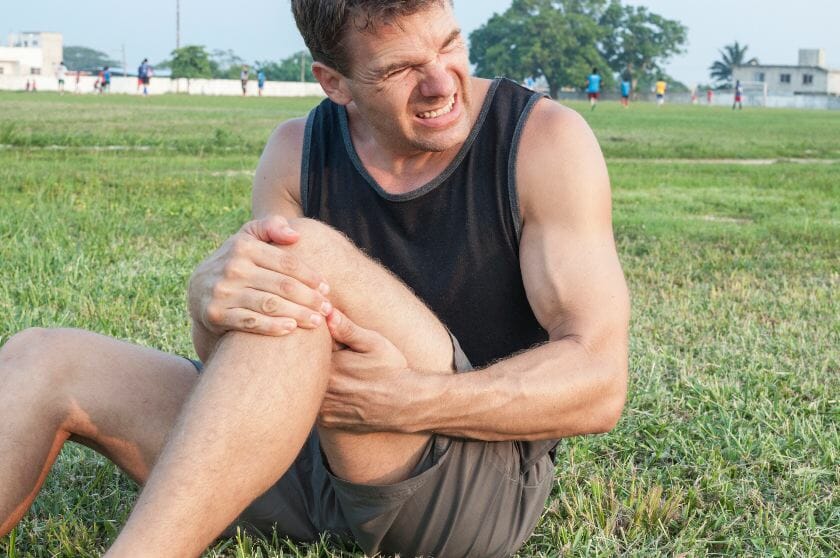
Now we know what could potentially increase our chances of a quadriceps tendon tear, but how will we know if we actually have injured the quadriceps tendon?
The following are the most common signs and symptoms of a quadriceps tendon tear:
- Acute knee pain after a traumatic event
- Knee buckling
- Difficulty walking
- Popping sensation
- A depression or indentation at the site of the torn tendon
- Decreased knee range of motion
- Inability to straight the knee
- Thigh weakness or joint weakness
- Swollen thigh above the knee
- Bruising tenderness just above or at the knee
Making the Official Diagnosis
If you suspect that you have a quadriceps tendon tear, it’s important to see a consult from a medical professional immediately.
This may include your primary care physician and an orthopedic or sports medicine specialist.
The physician will perform a physical exam to confirm the diagnosis of a quadriceps tendon tear and the severity of the injury. They will also make sure to rule out other possible diagnoses, such as a patellar tendon tear or patellar tendon rupture.
While the physical exam and mechanism of injury described will usually confirm the quadriceps tendon tear diagnosis, sometimes additional imaging may be needed.
When the quadriceps tendon tears, particularly with complete tears, the knee cap will normally move out of alignment.
This is something that can be observed with an X-ray. An MRI is not usually needed, but can show a more in-depth view of the soft tissues. This can be helpful to determine the extent of the injury and if any other soft tissue damage has occurred.
Severity of the Quadriceps Tendon Tear
A quadriceps tendon tear is typically classified as a partial tear or a quadriceps tendon rupture.
What about a pulled quadriceps muscle? Sometimes you may hear someone say they pulled a muscle, but is this the same thing as tearing it?
Technically, a pulled or strained muscle is a tear. A strained muscle can be categorized into three grades:
- Grade I: This is a minor injury. There is very little damage done to the muscle fibers, and likely very few negative physical side effects, such as with range of motion or strength. This may take a few weeks or up to one month to heal.
- Grade II: This is considered more of a partial tear, with more damage done to the quadriceps muscle fibers. You will likely notice a greater amount of loss with range of motion and strength. It could take up to 3 months to recover from partial tears.
- Grade III: This is a completely ruptured or completely torn quadriceps muscle. A quadriceps tendon rupture is a severe and significant injury, that typically will require surgery to repair.
You will have significant range of motion and strength loss, as well as possible a palpable indentation where the quadriceps tendon should attach to the muscles.
Treatment Options
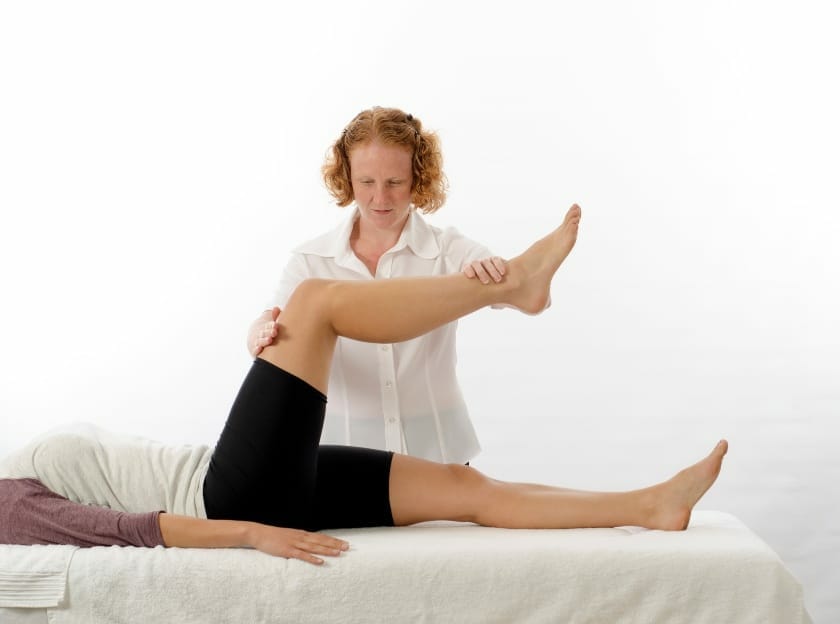
Treatment options for quadriceps tendon tears can be separated into nonsurgical treatment versus surgical treatment.
Which is chosen will depend on if the quadriceps tendon tear is a partial or complete tear and the associated symptoms.
Nonsurgical Treatment
Some partial tears respond well to conservative management, meaning they will not need surgical repair.
Someone will be a good candidate for nonsurgical treatment if their quadriceps muscles contract well enough to defer surgery.
This is usually assessed during the exam via performance of a straight leg raise. If they are able to perform a straight leg raise and demonstrate adequate strength in the quadriceps, they likely will not need surgery.
Any acute pain or injury is typically treated with the R.I.C.E. method. Rest, ice, compression and elevation. This will help to control swelling and pain in the early inflammatory phase of healing.
Although surgery is not indicated, partial quadriceps tendon tears will initially require use of a knee immobilizer for about 3-6 weeks.
The immobilizer is meant to keep the knee straight to allow for proper tissue healing. You may need to use an assistive device, such as crutches during this phase, as the amount of weight allowed on the injured leg will most likely be limited.
Some range of motions exercises may be prescribed by your physician during this time frame to get the knee moving. This may take place at physical therapy or with an at-home program given by your medical provider.
After week 6, you will definitely be in physical therapy. You may still require the knee immobilizer or a knee brace to some extent, depending on your physician’s recommendations.
During physical therapy, you may remove this device to progress your range of motion and begin strengthening the quadriceps. Physical therapy will begin with a gentle exercise progression to strengthen the quadriceps. Eventually, you will no longer need the immobilizer or brace at all.
Your usual activities can be resumed anywhere 3-6 months after the initial injury, as long as you demonstrate full knee function and strength.
This may also include return to your sporting and recreational activities, as long as you can demonstrate the specific skill set needed for return to those activities. This will usually be covered in physical therapy and with your physician.
A Closer Look at Physical Therapy
While your physical therapist may include many things in your treatment plan, exercise will absolutely be essential.
Let’s take a look at a few strengthening exercises you likely will encounter in physical therapy for a torn tendon.
1. Quad Set
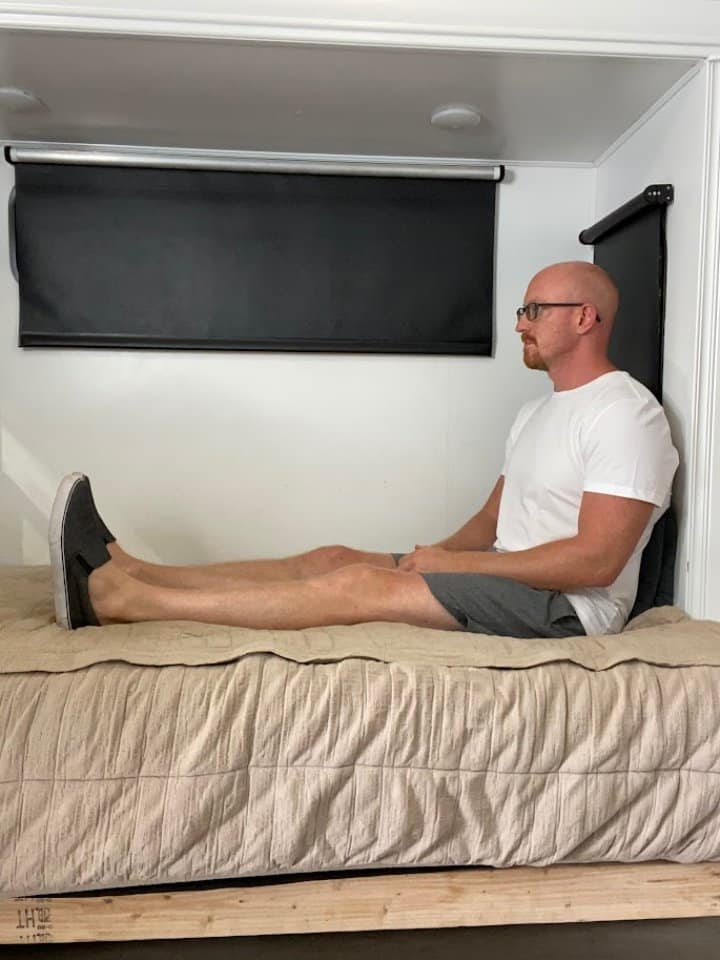
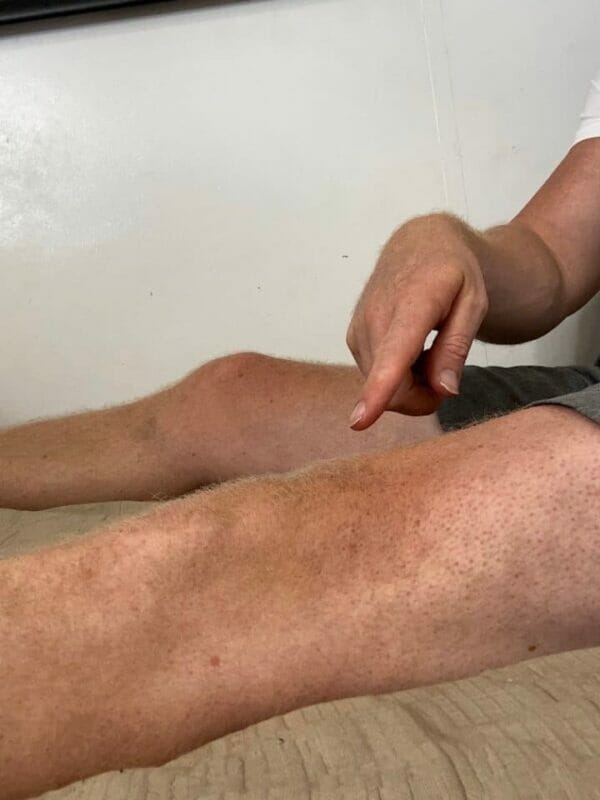
- Begin either laying on your back or in a long sitting position with the injured leg straight out in front of you. You can do this on your bed, couch or the floor, depending on what is safest and easiest for you to use.
- Gently squeeze the top of the thigh (your quadricep muscles), trying to flatten the back of the knee down towards the surface.
- Hold up to 5 seconds, then relax the muscle contraction.
- Repeat 10-15 repetitions for 2-3 sets.
2. Short Arc Quad
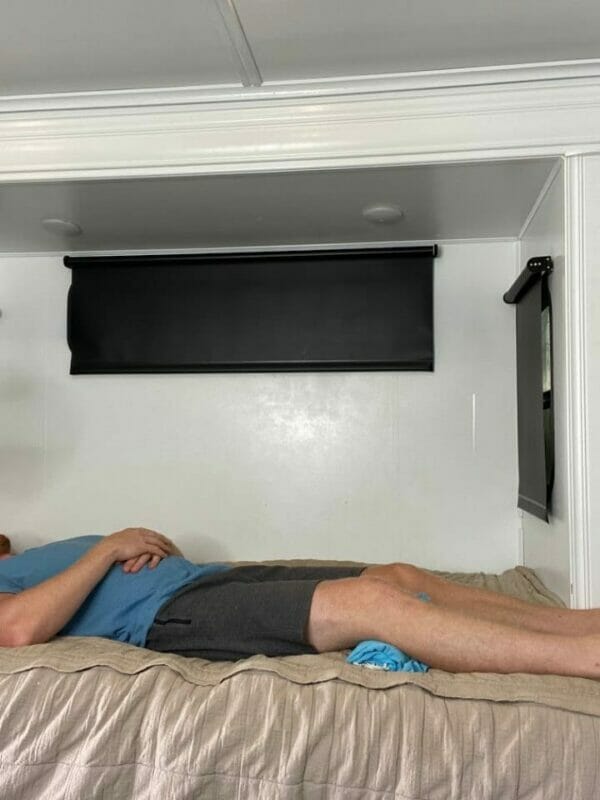
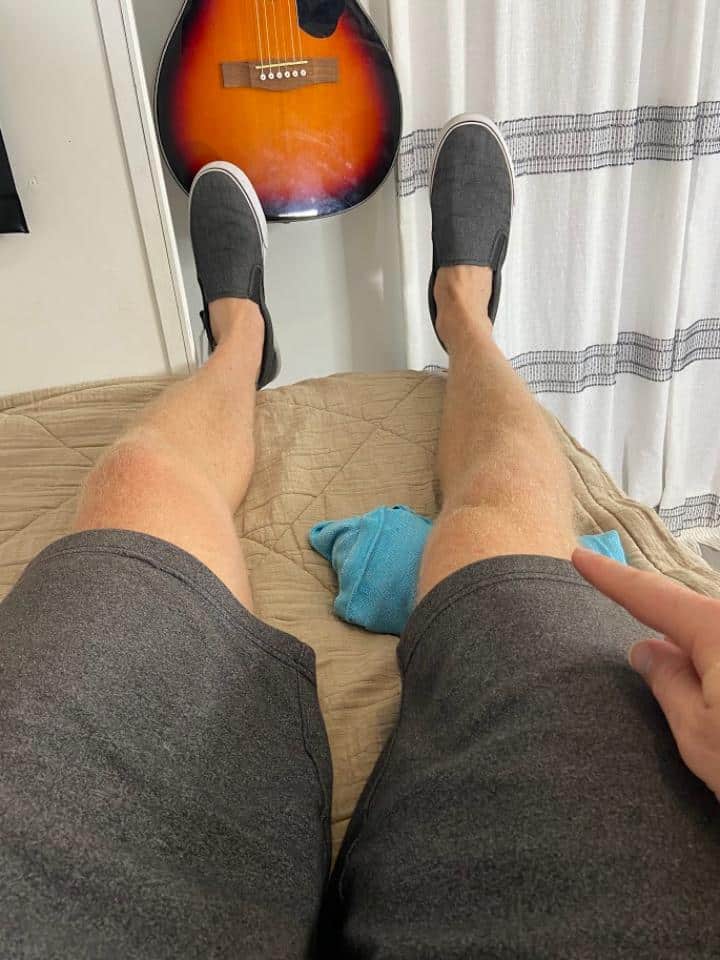
This is the next progression from the quad set.
- Begin either laying on your back or in a long sitting position with the injured leg straight out in front of you. You can do this on your bed, couch or the floor, depending on what is safest and easiest for you to use.
- Place a rolled towel under the back of the knee so that the knee is now bent.
- Similar to the quad set, squeeze the top of the thigh (your quadricep muscles), pressing the back of the knee into the towel, as the foot kicks up from the surface.
- Hold up to 5 seconds, then lower the foot back down and relax the muscles.
- Repeat 10-15 repetitions for 2-3 sets.
3. Long Arc Quad
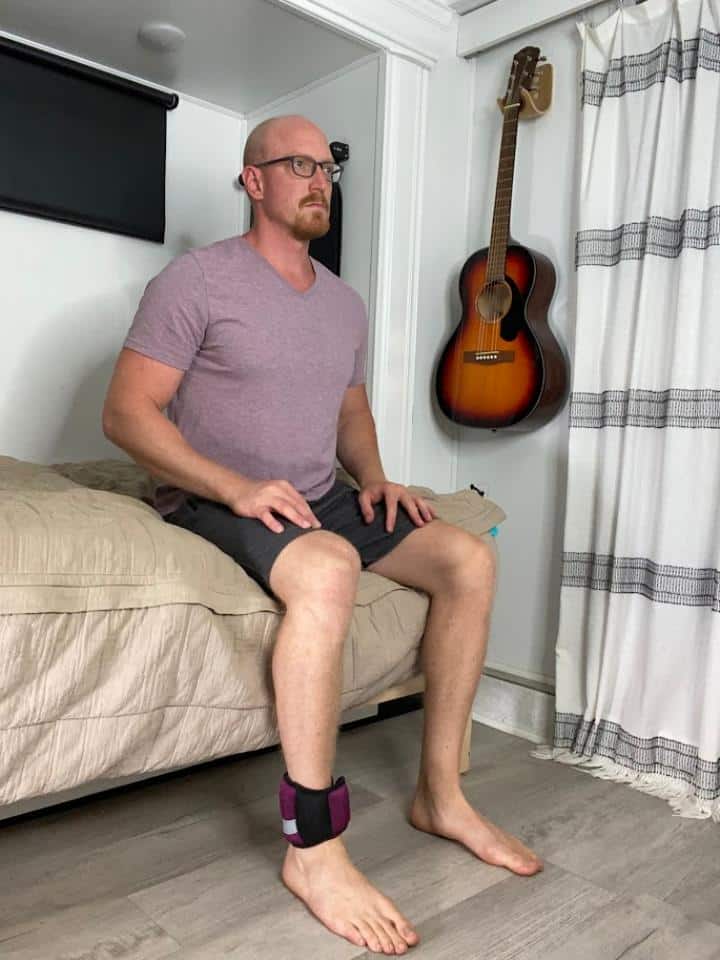
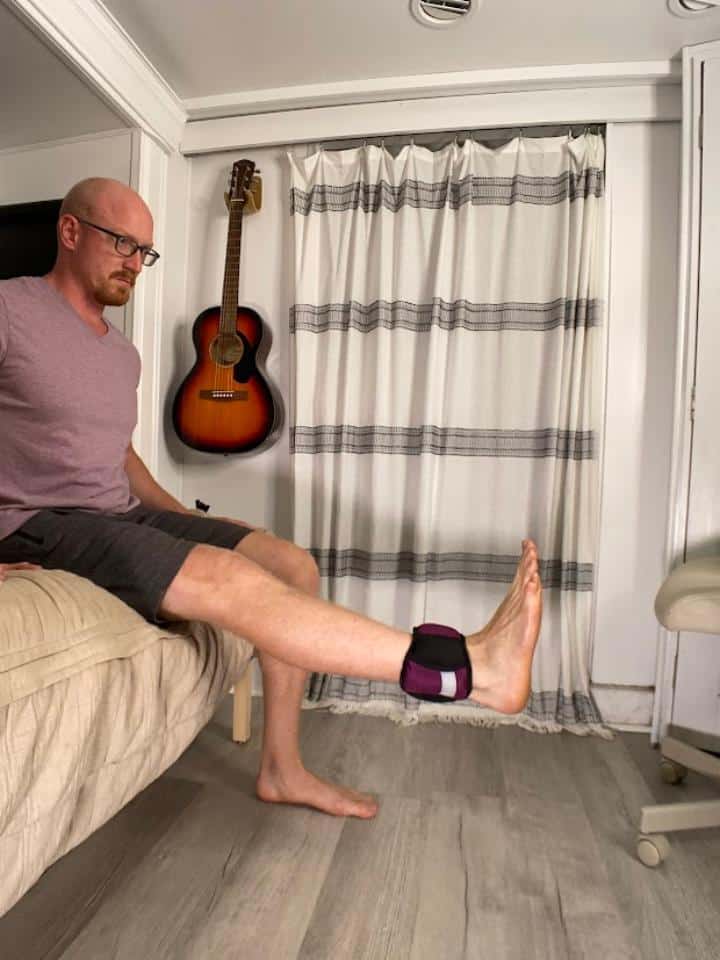
- Begin seated in a chair with the knees bent and feet flat on the floor.
- Using the injured leg, kick the foot off the floor and straighten the knee.
- Hold up to 5 seconds, then return to your starting position.
- Repeat 10-15 repetitions for 2-3 sets.
- You can advance this exercise, when ready, by adding resistance via a resistance band around the ankles or an ankle weight.
Below is a short video (less than 1 minute) that illustrates and describes the difference between a short arc quad and long arc quad for knee recovery.
The idea is to provide a basic outline of what you’re aiming for in both quads, as well as when you should use a short arc quad and a long arc quad.
4. Straight Leg Raise
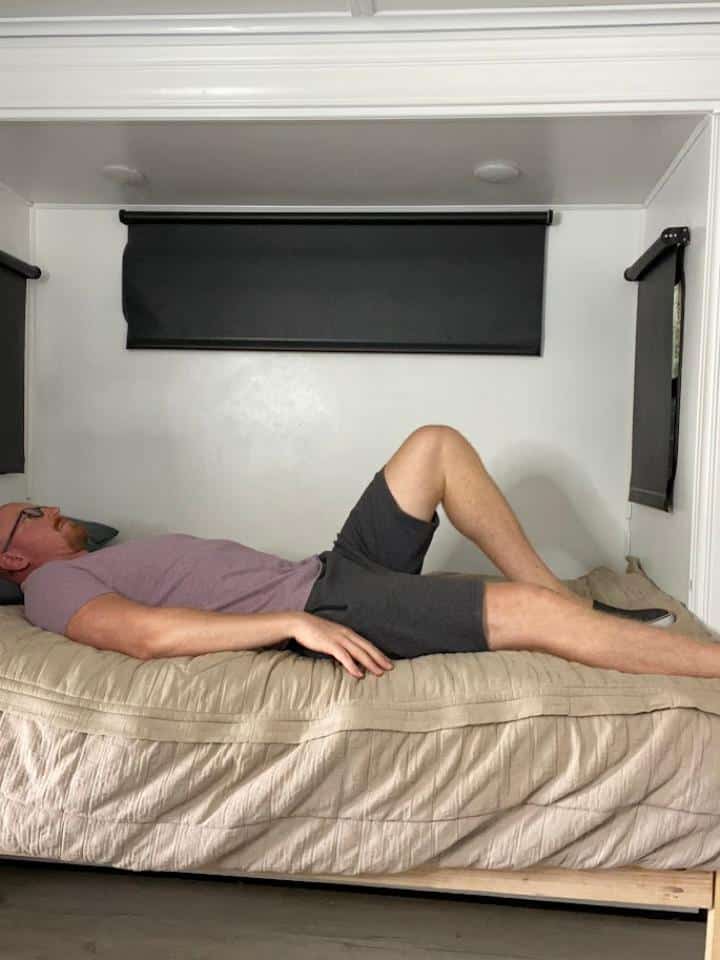
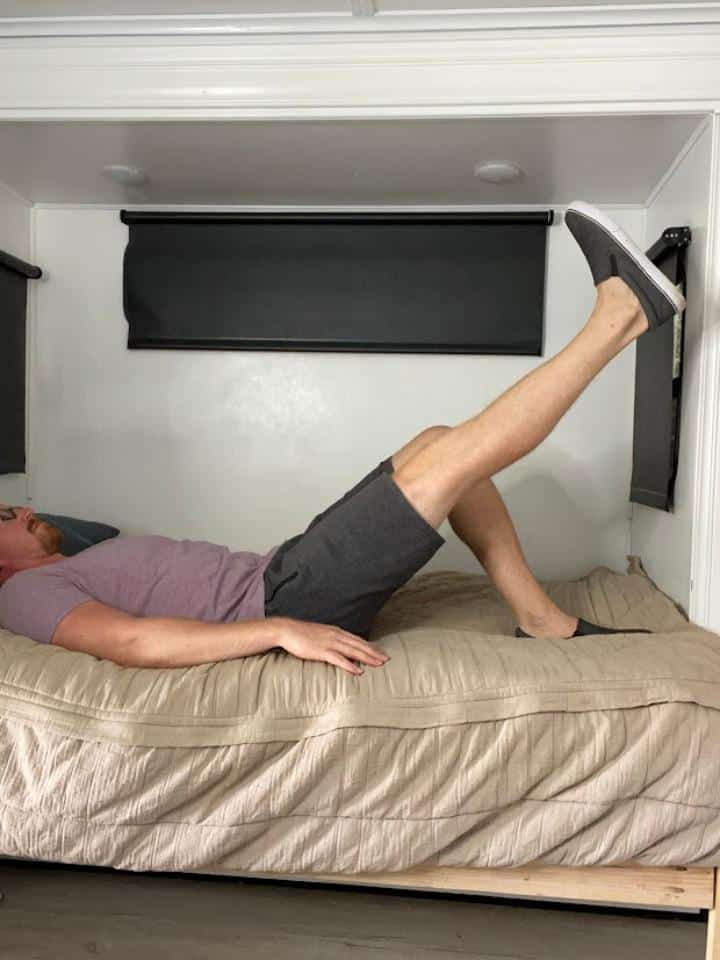
- Begin laying flat on your back with the legs stretched in front of you. Lay on your bed, couch or the floor, depending on what is safest and easiest for you to use.
- Bend the knee on the healthy leg and place the foot flat on the surface.
- Squeezing the top of the thigh, similar to the quad set, maintain this muscle contraction as you lift the entire leg up off the surface.
- Lift the leg until the thigh is even with the thigh on the opposite leg.
- Slowly lower back down to the surface.
- Make sure to avoid hyperextending the low back.
- Repeat 10-15 repetitions for 2-3 sets.
Surgical Repair of a Quadriceps Tendon Rupture
A quadriceps tendon repair surgery is necessary for complete tears, or ruptures, as well as for partial tears that demonstrate a substantial amount of quadriceps weakness.
Quadriceps tendon ruptures are considered a significant injury and absolutely affect your mobility and quality of life.
Surgical repair of a quadriceps tendon rupture will involve reconnecting the tendon to the patella. If surgery is indicated, it’s important not to delay it.
A delay in a necessary surgery may allow time for the quadriceps tendon to retract and shorten, making the surgery and recovery more difficult.
Surgery may take anywhere from 1-2 hours and then the knee will be placed in a knee immobilizer after with the knee extended.
Regaining range of motion will be the priority in physical therapy initially. You’ll gradually be able to return to full weight bearing about a couple of weeks post-operatively.
Aside from physical therapy, you will need to wear a knee brace locked in extension for 6 weeks after surgery.
Range of motion will continue, as well as the addition of quadriceps strengthening exercises about 6 weeks out, similar to what was mentioned in the nonsurgical treatment section. You will likely be able to remove the knee brace about 8 weeks after surgical repair.
You’ll be able to return to most of your daily activities a few months after surgery, and return to sport or recreational activities anywhere from 6-8 months after surgery. This time frame may vary depending on the severity of your injury and how your recovery process is going.
Long-Term Expectations for Recovery
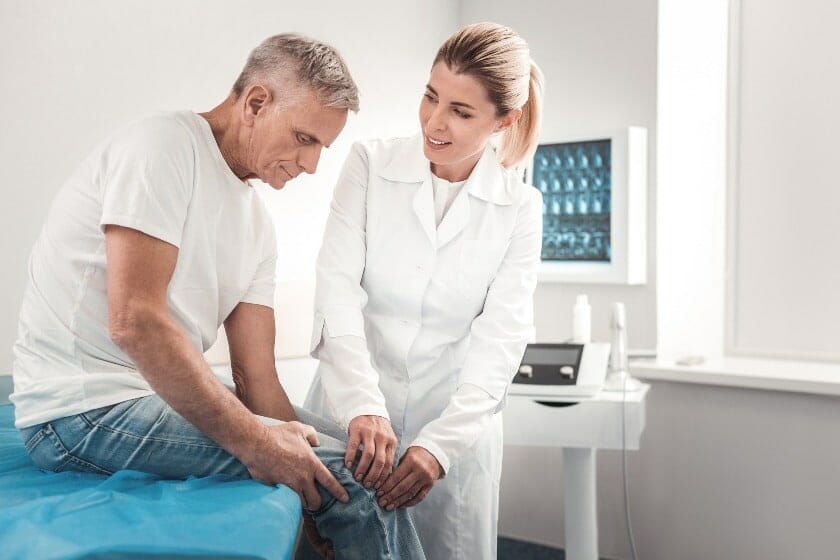
The prognosis in recovering from quadriceps tendon injuries is usually very good. While of course everything depends on the extent of your injury, as long as your knee pain and symptoms are addressed in a timely manner, there is no reason you shouldn’t be able to make a full recovery.
If you delay having a quadriceps tear properly examined and treated though, this can affect your recovery. It’s not that you won’t be able to fully recovery, but the surgical technique itself and the rehab will become much more challenging.
Moral of the story… get yourself checked out if you’re having acute knee pain and you think you’ve torn your quadriceps tendon! You’ll be much happier with the end result and ready to get back to your old self.
FAQ:
Can’t I just wait to see if my knee pain goes away on its own?
If you’re having acute and intense knee pain, along with mobility limitations, and the timing related to a trauma or injury, do not wait to have it looked at. Seek medical attention right away. This will help avoid further injury and improve your chances of recovery.
How do I prevent a quadriceps tendon tear?
Make sure you have a consistent workout routine that includes evenly strengthening the thigh muscles, especially the quads if you have a higher risk of a tendon tear there. If you practice a specific sport, make sure you’re practicing the correct form and technique.
Will I ever move the same after surgery for a quadriceps tendon tear?
Yes. You absolutely can get back to the same level of activity, both functionally and recreationally, after this type of surgery. Your outcomes and success though will always be better the sooner you receive medical treatment and begin the rehab process.


